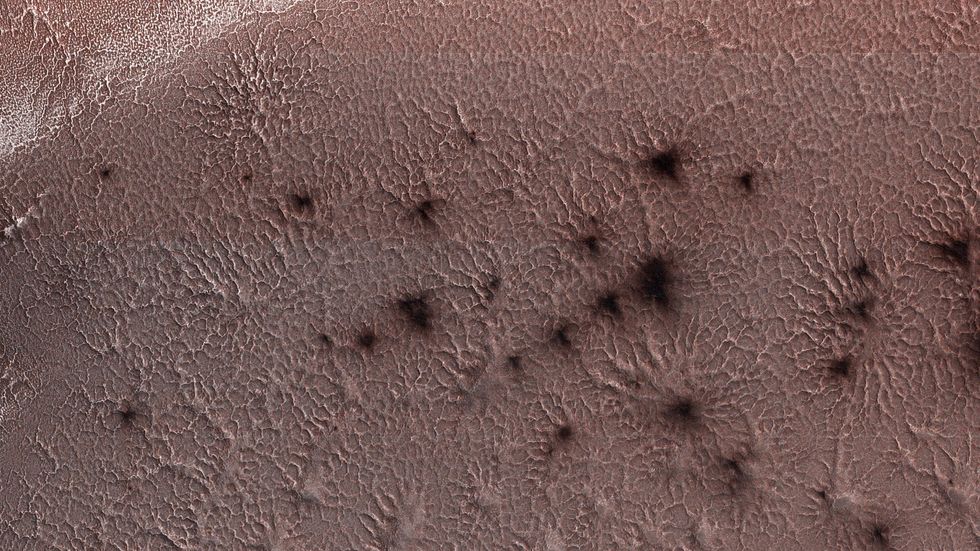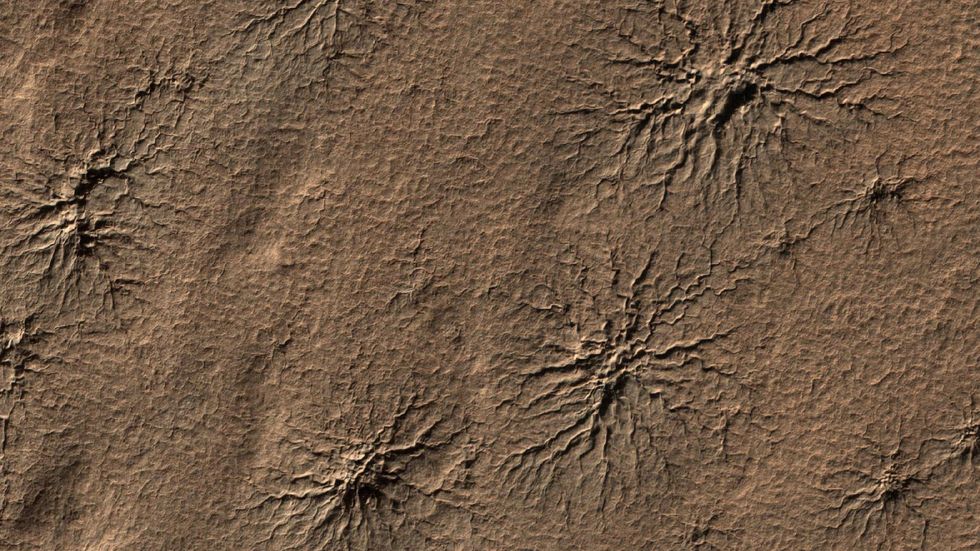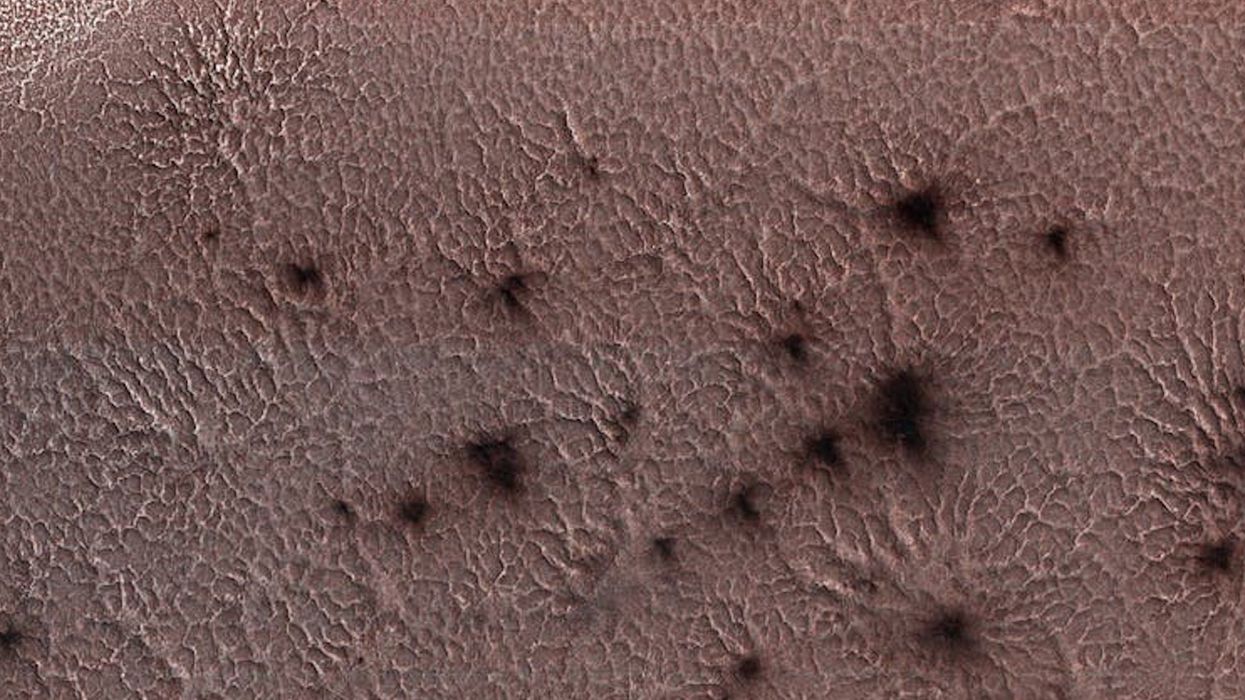Jake Brigstock
Sep 19, 2024
Scientists make breakthrough in finding explanation for 'spiders from Mars'
content.jwplatform.com
A team of scientists at NASA have confirmed how Mars' 'spider' formations are carved by carbon dioxide.
They were first discovered in 2003 and each formation can stretch more than half-a-mile from end-to-end.
Called araneiform terrain, these features are often found in clusters, giving the surface a wrinkled appearance.
The leading theory is these are created by processes involving carbon dioxide ice, which doesn't occur naturally on Planet Earth, but this has now been recreated in a lab using simulated temperatures and air pressure and has been detailed in a new paper published in The Planetary Science Journal.
Lauren McKeown, of NASA's Jet Propulsion Laboratory in Southern California, said: "The spiders are strange, beautiful geologic features in their own right. These experiments will help tune our models for how they form."

The study confirms a number of formation processes described by what's called the Kieffer model.
Sunlight heats the soil when it shines through transparent slabs of carbon dioxide ice that build up on the Martian surface each Winter.
Being darker than the ice above it, the soil absorbs the heat and causes the ice closest to it to turn directly into carbon dioxide gas - without turning to liquid first - in a process called sublimation.
As the gas builds in pressure, the ice cracks, allowing the gas to escape. It then seeps upward and the gas takes with it a stream of dark dust and sand from the soil that lands on the surface of the ice.
When Winter turns to Spring and the remaining ice sublimates, according to the theory, the spider-like scars from those small eruptions are what's left behind.

Now the conditions have been found for plumes to form, the next step is to try the same experiments with simulated sunlight from above, rather than using a heater below.
This could help scientists narrow down the range of conditions under which the plumes and ejection of soil might occur.
How to join the indy100's free WhatsApp channel
Sign up to our free indy100 weekly newsletter
Have your say in our news democracy. Click the upvote icon at the top of the page to help raise this article through the indy100 rankings.
Top 100
The Conversation (0)













